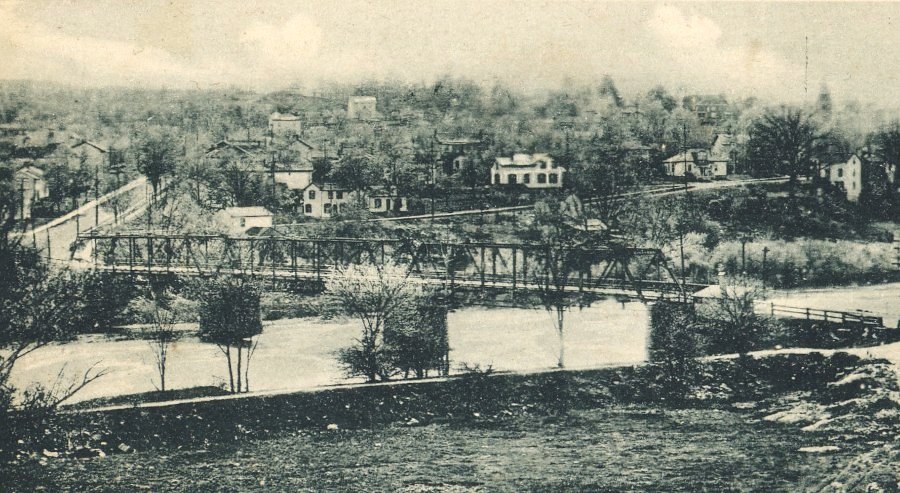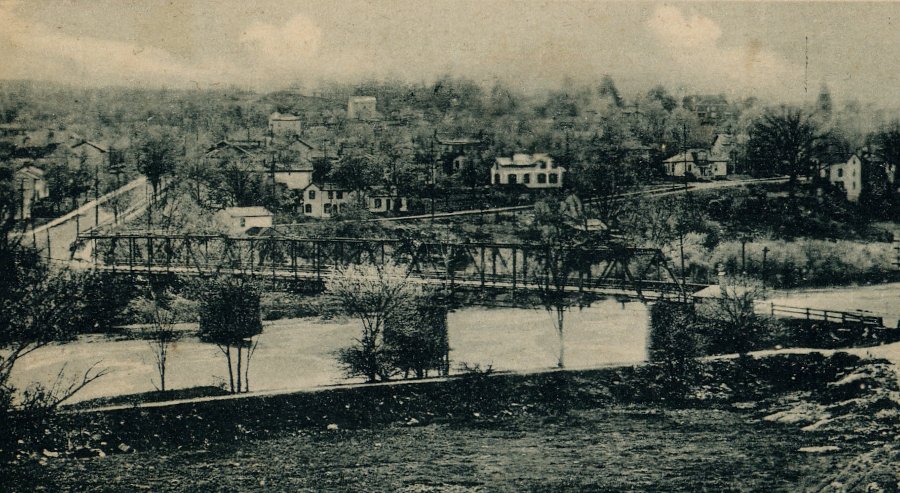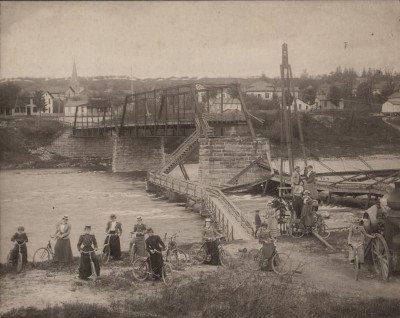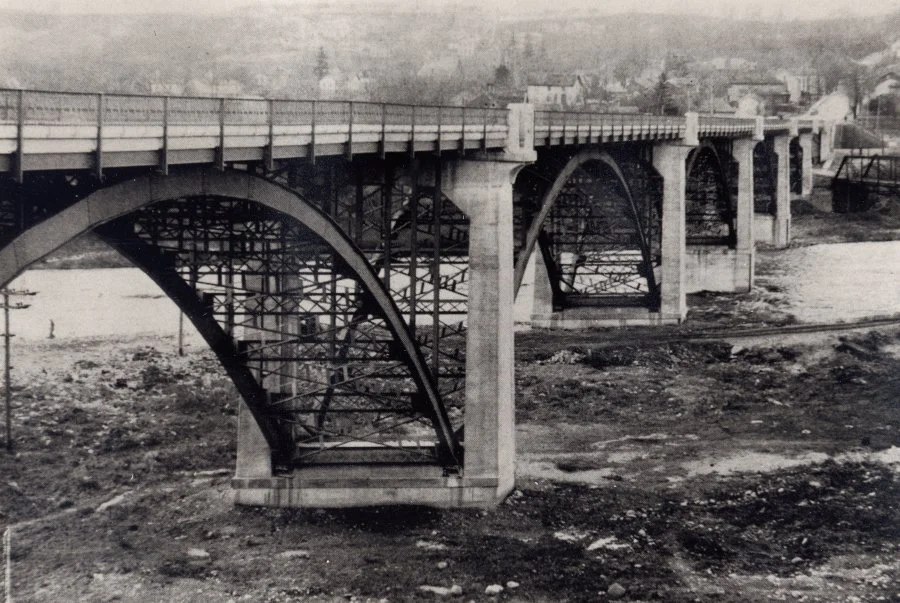
Bridges of Paris
On April 5th, 1793 Augustus Jones, the deputy-surveyor of Upper Canada was in the process of surveying what was to become known as Governor’s Road. The work had been commissioned by John Graves Simcoe, the Lieutenant-Governor of Upper Canada as part of his plan to build a military road connecting Dundas with London.
On that April morning, Jones was stopped short by a barrier. He and his crew stood on the eastern bank of the Grand River at a spot not far from today’s high-level bridge. Jones had to have a raft constructed to cross the surging waterway, swollen by the spring melt, and continue his surveying. People have been trying to find ways to cross the Grand River in Paris ever since. Even now, over two-hundred and twenty-five years later, bridges are an active topic in Paris.
Before Paris officially became a village in 1850, crossing the Grand River while travelling along Dundas Street (also known as Governor’s Road) was no easy task unless you brought your own boat. Even then there was the current to deal with. One early method of crossing used a basket that was slung from a rope and drawn to the opposite bank. During a flood in the spring of 1837 an unlucky passenger dropped into the river and was swept away. The need for a bridge was obvious.
Exactly when the first Dundas Street bridge was constructed is unclear, although maps and drawings from the period suggest that wooden bridges were in place across the Grand River at Dundas Street and William Street by the early 1850s. Timber bridges have a short lifespan – usually no more than 20 years – so by the 1870s, after Paris had grown in population and become a town, the town council’s bridge committee was tasked with replacing both the William Street and Dundas Street bridges.
After some contractual miscues and council wrangling about the timetable interfering with harvest time (farmers needed to bring their grain across the river to be milled), two identical wrought iron bridges were built, one at Dundas Street and one at William Street. The bridges each were comprised of three 120-foot spans supported by stone abutments. The work was completed in late fall of 1877. A cost-cutting measure made at the time came back to haunt the town council two decades later.
In 1876 the stone abutment for the existing timber bridge at Dundas Street had been replaced. To save time and money the bridge committee decided to reuse this year-old east abutment to hold up the east end of the new iron bridge. In the spring of 1898 an inspector warned that this same east abutment had been undermined and needed repair. Nothing was done about the inspector’s warning and just over a year later the undermined abutment collapsed, taking with it the east span of the just over 20-year-old iron bridge. A temporary wooden footbridge was hastily constructed for pedestrians until a replacement abutment and span could be installed.
The original Dundas Street bridges – timber and later wrought iron – were meant to carry pedestrians and horse-drawn wagons and carriages. The coming of automobile and truck traffic in the 1920s made the 1877 Dundas Street bridge obsolete. A high-level bridge to carry cars and trucks over the Grand River without descending into the valley was built in 1931 and later replaced with an even larger high-level bridge in 1968. The heavy timber vehicle decking was removed from the 1877 wrought iron bridge but the sidewalk was retained and later upgraded so the bridge could be used by pedestrians only.
With minimal maintenance the 1877 wrought iron bridge continued to deteriorate until it was closed to pedestrian traffic in 1981. The bridge was demolished and its stone piers in the river were removed in late 1987. Only vestiges of the east bank abutments remain.
- the 1877 wrought iron Dundas Street bridge
- 1968 high level bridge
- 1931 high level bridge
-1899 Dundas Street bridge abutment collapse
- wrought iron Dundas Street bridge, closed to all traffic, prior to its demolition in 1987






